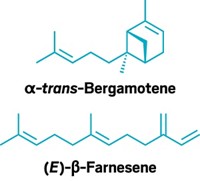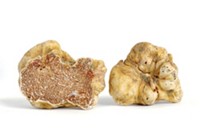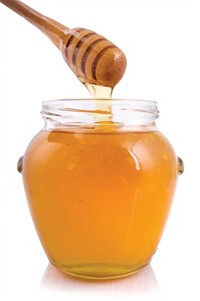Advertisement
Grab your lab coat. Let's get started
Welcome!
Welcome!
Create an account below to get 6 C&EN articles per month, receive newsletters and more - all free.
It seems this is your first time logging in online. Please enter the following information to continue.
As an ACS member you automatically get access to this site. All we need is few more details to create your reading experience.
Not you? Sign in with a different account.
Not you? Sign in with a different account.
ERROR 1
ERROR 1
ERROR 2
ERROR 2
ERROR 2
ERROR 2
ERROR 2
Password and Confirm password must match.
If you have an ACS member number, please enter it here so we can link this account to your membership. (optional)
ERROR 2
ACS values your privacy. By submitting your information, you are gaining access to C&EN and subscribing to our weekly newsletter. We use the information you provide to make your reading experience better, and we will never sell your data to third party members.
Natural Products
Tramadol’s Newfound Natural Product Status In Doubt
New study suggests human-caused contamination explains 2013 report of tramadol in a medicinal plant
by Carmen Drahl
September 29, 2014
| A version of this story appeared in
Volume 92, Issue 39

For the duration of human existence, plants have been sources of medicine. On rare occasions, a drug thought to be a human invention turns out to have been from nature all along.
Last year, researchers made the case for adding another drug to that short list. They detected tramadol, a synthetic narcotic recently reclassified as a controlled substance, in the roots of an African medicinal plant (Angew. Chem. Int. Ed. 2013, DOI: 10.1002/anie.201305697). It seemed to be a tale about nature’s many secrets.
Until this month, that is, when another team’s results complicated matters.
The story begins with Michel De Waard of France’s Grenoble Institute of Neuroscience, who has long been fascinated with natural remedies. A collaborator in Cameroon drew De Waard’s attention to a plant called Nauclea latifolia, commonly known as the African peach or pincushion tree. Traditional healers use the plant’s root bark for a multitude of ailments, including pain.
Researchers had previously detected anti-inflammatory and antimalarial compounds in the plant, but De Waard, a neuroscientist, joined forces with chemists and pharmacologists to see if other teams had missed something.
When tramadol turned up in the plant at rather high levels (approximately 0.4% by weight of dried root bark), De Waard says, his team took pains to ensure the samples hadn’t been unintentionally contaminated with the synthetic drug. Three different labs analyzed different samples collected at a national park in northeastern Cameroon, each at different time points, he says. A collaborator also demonstrated that the nitrogen isotope ratios of tramadol found in the plant are different from commercially available tramadol samples, which would suggest the tramadol was synthesized biologically. “It was not that surprising to me that a plant could make tramadol,” De Waard says. “Morphine is a natural product,” and tramadol was designed to contain that painkiller’s essential chemical groups, he points out.

De Waard’s results were surprising to Michael Spiteller at Dortmund University of Technology, in Germany. Together with an international team of collaborators, he reported this month that the appearance of tramadol in the pincushion tree is likely a result of human-caused contamination (Angew. Chem. Int. Ed. 2014, DOI: 10.1002/anie.201406639).
He wasn’t convinced by the isotope analysis. He contacted De Waard for a root sample he could analyze independently. His African colleagues sampled from Cameroon’s semiarid Far North region as well as its southern rain forest—completely different locations from De Waard’s.
Spiteller confirmed the 0.4% tramadol content in De Waard’s samples. But Spiteller’s own samples were strikingly different. Those from the north had low amounts of tramadol—about 10,000 times lower than what De Waard detected. Samples from the south had no detectable tramadol. At that point, Spiteller started thinking about contamination as a possible explanation for the discrepancy.

His collaborators in Cameroon chatted up local farmers. Sure enough, they learned that farmers in the north feed tramadol to cattle used as beasts of burden so they don’t tire as easily. Farmers in the country’s south don’t report the practice. Mass spectrometry of the northern pincushion tree roots, as well as water and soil samples near the trees, confirmed the presence of mammalian tramadol metabolites. Roots from other nearby tree species contained tramadol as well. Spiteller’s team thinks that cattle dosed with tramadol urinated and defecated under pincushion trees, and the synthetic tramadol was then taken up by the plant roots.
The off-label use of tramadol in Cameroon may pose a risk to drinking water supplies, Spiteller says. His team has preserved plant samples that other teams may obtain upon request.
People give pain medications to cattle to improve work ability, but tramadol is not used in cattle in the U.S., says Marcy Jan Souza, who studies tramadol at the University of Tennessee College of Veterinary Medicine. Little is known about cattle’s tramadol metabolism, Souza says, so any metabolites in roots and soil should be interpreted with caution.
“We wouldn’t have published this story if we weren’t sure we were looking at contamination,” Spiteller says. His collaborators have obtained tramadol pills in Nigeria, which borders Cameroon. They hope to obtain an isotope ratio to compare with that of the root samples.
“I still think that tramadol is of natural origin,” De Waard says. Differing plant ages, symbiotic fungi or microbes, and Cameroon’s varied climate could explain the discrepancy in the teams’ results, he suggests.
“I’m pretty convinced by the new paper, but they haven’t completely nailed it,” says A. Douglas Kinghorn, a natural products expert at Ohio State University. He praised De Waard’s work last year but says Spiteller’s report caused doubts he’d had to resurface. Kinghorn points out that the tramadol in De Waard’s samples is an equal mixture of enantiomers. Although that’s not unheard of in nature, it’s a big coincidence that out of four possible stereoisomers, the plant makes the exact same ones as are found in synthetic tramadol.
“Neither team’s argument is 100% convincing to me,” says Kirk Gustafson, natural products chemistry group leader at the National Cancer Institute in Frederick, Md. Someone needs to reconcile the huge differences in tramadol levels between the different samples, he says. He’d like to see plant feeding studies with isotope-labeled or radiolabeled compounds. If labeled tramadol fed to cattle ends up in plant roots, then that would be strong evidence that the tramadol is a contaminant. But if the plant can use labeled precursor compounds to make tramadol, that would suggest tramadol is natural, he says.
Feeding experiments have been planned but haven’t yet commenced, says De Waard’s collaborator Richard J. Robins, a natural products biochemist with France’s National Center for Scientific Research (CNRS). His team’s latest results measure the isotope ratio at each individual carbon in tramadol, instead of the whole compound. “Our data definitely give support to a natural origin, but I’m open to all possibilities,” Robins says.
“I’m glad science always leaves some question marks,” Robins adds. “Otherwise, we wouldn’t have a job to do.”





Join the conversation
Contact the reporter
Submit a Letter to the Editor for publication
Engage with us on Twitter